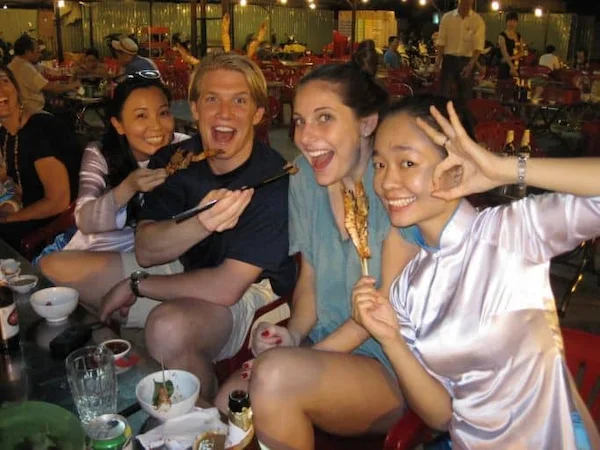Navigating Vietnamese Work Etiquette: A Guide for Foreign Employees
As a foreign employee in Vietnam, understanding the nuances of the country’s work etiquette is crucial for success. By familiarizing yourself with these cultural norms, you can build strong relationships with colleagues and excel in your professional endeavors. Let’s dive into the key aspects of Vietnamese work etiquette that every foreign employee should know.
The Importance of Hierarchy and Respect
In Vietnamese culture, hierarchy plays a significant role in both personal and professional settings. Age, seniority, and position are highly respected, and this is reflected in the workplace.
When interacting with colleagues, always show deference to those in higher positions or older than you. Use proper titles such as “anh” for older men, “chị” for older women, and “em” for younger colleagues. Addressing someone by their first name is considered disrespectful unless you have been explicitly invited to do so.
Remember, showing respect is key to building trust and fostering positive relationships in the Vietnamese workplace.
Building Relationships Through Small Talk

In Vietnam, building personal relationships is an essential part of professional life. Small talk and casual conversations are encouraged as a way to establish rapport with colleagues.
Take the time to engage in friendly chats about family, hobbies, or weekend plans. Show genuine interest in your colleagues’ lives and share a bit about yourself as well. These interactions help create a sense of camaraderie and trust, which can lead to smoother collaboration and better teamwork.
The Art of Indirect Communication
In Vietnamese culture, direct confrontation is often avoided to maintain harmony and save face. As a result, communication in the workplace can be more indirect compared to Western cultures.
Pay attention to non-verbal cues, such as facial expressions and body language, as they can convey important messages. If a colleague seems hesitant or uncomfortable with a request, they may be politely trying to express disagreement without saying “no” outright.
When providing feedback or addressing sensitive issues, use a gentle and diplomatic approach. Focus on the situation rather than the individual, and offer constructive suggestions for improvement. By mastering the art of indirect communication, you can navigate challenging conversations with tact and maintain positive working relationships.
The Significance of Face and Harmony

In Vietnamese culture, the concept of “face” (or “thể diện”) is highly valued. Face refers to a person’s reputation, dignity, and prestige within their social circle.
Avoiding public criticism or embarrassment is crucial to maintaining face. If you need to address a mistake or provide negative feedback, do so privately and with sensitivity. Publicly praising individuals for their accomplishments, on the other hand, is a great way to give face and boost morale.
Harmony is another key aspect of Vietnamese work culture. Strive to maintain a peaceful and cooperative environment by avoiding confrontations and finding compromises when disagreements arise. Promoting a sense of unity and collaboration within the team will contribute to a positive and productive workplace.
Navigating Business Meetings and Negotiations
When attending business meetings or engaging in negotiations with Vietnamese colleagues or partners, there are a few etiquette rules to keep in mind.
Punctuality is essential, so make sure to arrive on time or slightly early. Dress formally to show respect for the occasion and your counterparts. When exchanging business cards, use both hands to present and receive them, taking a moment to read the information before putting them away.
During negotiations, be patient and prepared for lengthy discussions. Vietnamese business culture values relationships, so take the time to build rapport and trust before diving into the details. Avoid aggressive tactics or high-pressure sales techniques, as they may be perceived as disrespectful.
Remember, the goal is to reach a mutually beneficial agreement while maintaining a positive long-term relationship.
Embracing Vietnamese Hospitality

Vietnamese culture is known for its warm hospitality, and this extends to the workplace. Colleagues may invite you to share meals, attend social events, or even visit their homes.
Accept these invitations graciously, as they are a sign of friendship and trust. When dining with colleagues, be open to trying new dishes and participating in the communal eating style. Offer to pay your share or reciprocate the invitation in the future to show your appreciation.
Building strong personal connections with your Vietnamese colleagues can lead to lasting friendships and a more fulfilling work experience.
Conclusion
Navigating Vietnamese work etiquette as a foreign employee requires a blend of cultural understanding, respect, and adaptability. By embracing hierarchy, building relationships through small talk, mastering indirect communication, maintaining face and harmony, and navigating business meetings and negotiations with care, you can thrive in the Vietnamese workplace.
Remember, every interaction is an opportunity to learn and grow. Embrace the differences, be open to new experiences, and always approach your colleagues with kindness and respect.
For expert advice on Vietnamese work etiquette and professional development opportunities, visit Jobinvietnam.net. As a leading platform specializing in connecting foreign talent with top companies in Vietnam, Jobinvietnam.net is your go-to resource for navigating the Vietnamese job market. Contact them via phone or Zalo to receive personalized guidance and take your career in Vietnam to new heights.

